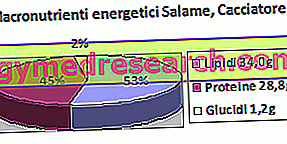REMOV ® is a drug based on Nimesulide
THERAPEUTIC GROUP: Non-steroidal anti-inflammatory and antirheumatic drugs
IndicationsAction mechanismStudies and clinical effectiveness Usage and dosage instructionsWarnings Pregnancy and lactationInteractionsContraindicationsUndesirable effects
Indications REMOV ® Nimesulide
REMOV ® is a medicine used in the treatment of acute pain during inflammatory and gynecological diseases (primary dysmenorrhea).
Mechanism of action REMOV ® Nimesulide
Nimesulide, the active ingredient of REMOV ®, introduced on the market over 25 years ago represented and continues to represent, despite the conflicting opinions related to potential side effects, one of the most used anti-inflammatory drugs in the clinical setting.
Founder of the subclass of sulfonamides, nimesulide is distinguished from most non-steroidal anti-inflammatory drugs due to its chemical-physical properties, which improve both its pharmacokinetic and pharmacodynamic characteristics.
From the pharmacokinetic point of view, in fact, the presence of a sulfohanilide group allows to considerably reduce the acidity of nimesulide, thus moderating the direct lesion effect on the gastro-enteric mucosa on the one hand, and improving its mucosal absorption on the other.
Pharmacologically, however, the chemical structure allows nimesulide to perform a selective inhibitory action against cyclooxygenases 2, thus reducing the production of chemical mediators known as prostaglandins involved in the genesis of the inflammatory process and associated pain, while maintaining the gastroprotective and nephroprotective functions of local mediators expressed by COX1.
Following a hepatic metabolism supported by citrochromial enzymes, and more specifically by the CYP2C9 isoform, the inactive catabolites of nimesulide are excreted predominantly via the kidneys.
Studies carried out and clinical efficacy
1.RESTRICTION TO USE OF NIMESULIDE: the effects in Italy.
Ann Ist Super Sanita. 2010; 46 (2): 153-7.
All-Italian study that evaluated the consequences of the new restrictive regulations dated 2007, related to the use of nimesulide, on the number of hospital admissions due to hepatotoxicity and induced gastrointestinal haemorrhages. The study seems to suggest preventive action against liver disease, but is not very effective on intestinal bleeding. For this reason it would be appropriate to carefully evaluate the risk-benefit ratio before administering nimesulide.
2. THE ANTITUMORAL ACTIVITY OF THE NIMESULIDE
Zhonghua Er Bi Yan Hou Tou Jing Wai Ke Za Zhi. 2010 Oct; 45 (10): 854-8.
Interesting experimental study conducted on cell cultures of hypopharyngeal carcinoma that demonstrates how nimesulide can induce apoptosis of these cells while also inhibiting the tendency to give metastasis.
3. NIMESULIDE AND DICLOFENAC COMPARED
Klin Med (Mosk). 2009; 87 (10): 62-6.
Work conducted on 80 patients suffering from rheumatoid arthritis who compare the efficacy and safety of two important NSAIDs, nimesulide and diclofenac, in reducing painful symptoms. The results show a similar efficacy of the two drugs but with a better tolerability of nimesulide against the side effects on the gastro-enteric mucosa.
Method of use and dosage
REMOV ®
Nimesulide 100 mg tablets;
Granules for oral suspension of 100 mg of nimesulide;
The classic dosing schedule useful for overcoming osteoarticular and gynecological pain symptomatology, involves taking a tablet or a 100 mg sachet of nimesulide, twice a day, preferably after meals.
The treatment should be continued for the shortest possible time and supervised by your doctor, who could possibly adjust the dosage in the case of patients contextually suffering from liver and kidney diseases.
Warnings REMOV ® Nimesulide
Therapy with REMOV ® should be supervised by your doctor, in order to maintain high therapeutic efficacy on the one hand and to preserve the patient's state of health on the other.
It is in fact known how the magnitude and incidence of the side effects associated with nimesulide therapy, are proportional to the duration of the therapy and to the doses of drug used.
Despite the particular chemical formula of nimesulide allows a selective action on COX2, an important action has been documented damaging to the liver and the gastrointestinal mucosa associated with inappropriate therapies with nimesulide.
For this reason the patient should consult his doctor before taking REMOV ®.
Particular attention should also be given to patients suffering from liver, kidney, gastrointestinal and cardiological diseases, given the increased susceptibility of these to adverse drug-induced reactions.
Should any side effects appear, the patient should immediately contact his doctor, taking into consideration the possibility of immediately suspending the therapy in progress.
REMOV ® in tablets contains lactose, therefore its use is not recommended in patients with lactose intolerance, lactase enzyme deficiency and glucose-galactose malabsorption syndrome.
On the other hand, REMOV ® granules for oral suspension contain sucrose, making it less suitable for patients suffering from hereditary syndromes of fructose intolerance, glucose / galactose malabsorption and sucrose-isomaltase deficiency.
PREGNANCY AND BREASTFEEDING
Note the importance of prostaglandins in guaranteeing the correct process of cellular differentiation both in the fetus and in the embryo, and documented the important side effects of taking nimesulide during pregnancy on the fetus, it is clear that taking REMOV ® is contraindicated during the pregnancy.
This contraindication should also be extended to the subsequent breastfeeding phase, given the ability of nimesulide to concentrate in clinically relevant quantities in breast milk.
Interactions
The patient undergoing REMOV ® therapy should pay particular attention to the simultaneous intake of other active ingredients capable of appreciably varying the efficacy and tolerability of nimesulide.
More precisely it would be advisable to avoid the concomitant administration of:
- Valproic acid, fenofibrates, salicylates, tolbutamide given the ability to reduce the efficacy of nimesulide, competing with the binding to the active site;
- Diuretics, ACE inhibitors, angiotensin II antagonists, methotrexate and ciclosporin, given the ability to increase renal toxicity of nimesulide;
- Active ingredients able to alter gastric motility, thus avoiding variations in drug absorption;
- Antibiotics and substrates of cytochromial enzymes, capable of altering the pharmacokinetic profile of nimesulide, enhancing the potential side effects.
- NSAIDs and opioids, given the increased analgesic effect of their interaction;
- Anticoagulants, given the increased risk of bleeding associated with the simultaneous use of NSAIDs.
Contraindications REMOV ® Nimesulide
The use of REMOV ® is contraindicated in case of hypersensitivity to the active ingredient or to one of its excipients, hepatic and renal insufficiency, gastric ulcers and gastrointestinal pathologies and severe heart failure.
Undesirable effects - Side effects
Despite the particular chemical structure of nimesulide, it allows the active principle to carry out a selective therapeutic action, numerous clinical trials have however highlighted the incidence of hepatic and gastrointestinal pathologies following the assumption of this drug, so as to determine its withdrawal from the trade in Ireland.
Among the most serious side effects, the incidence and severity of which appears to be proportional to the duration of the therapy and to the dosages used, we observed: skin rash, pruritus, urticaria and edema, anemia, neutrophilia, thrombocytopenia, granule cytopenia, drowsiness, headache, insomnia and dizziness, tachycardia and hypertension, epigastric pain, nausea, vomiting, diarrhea and gastralgia, hyperkalemia, asthma, dyspnoea and bronchospasm, dysuria, oliguria, isolated hematuria and abnormal liver function.
Note
REMOV ® is a prescription-only drug.



